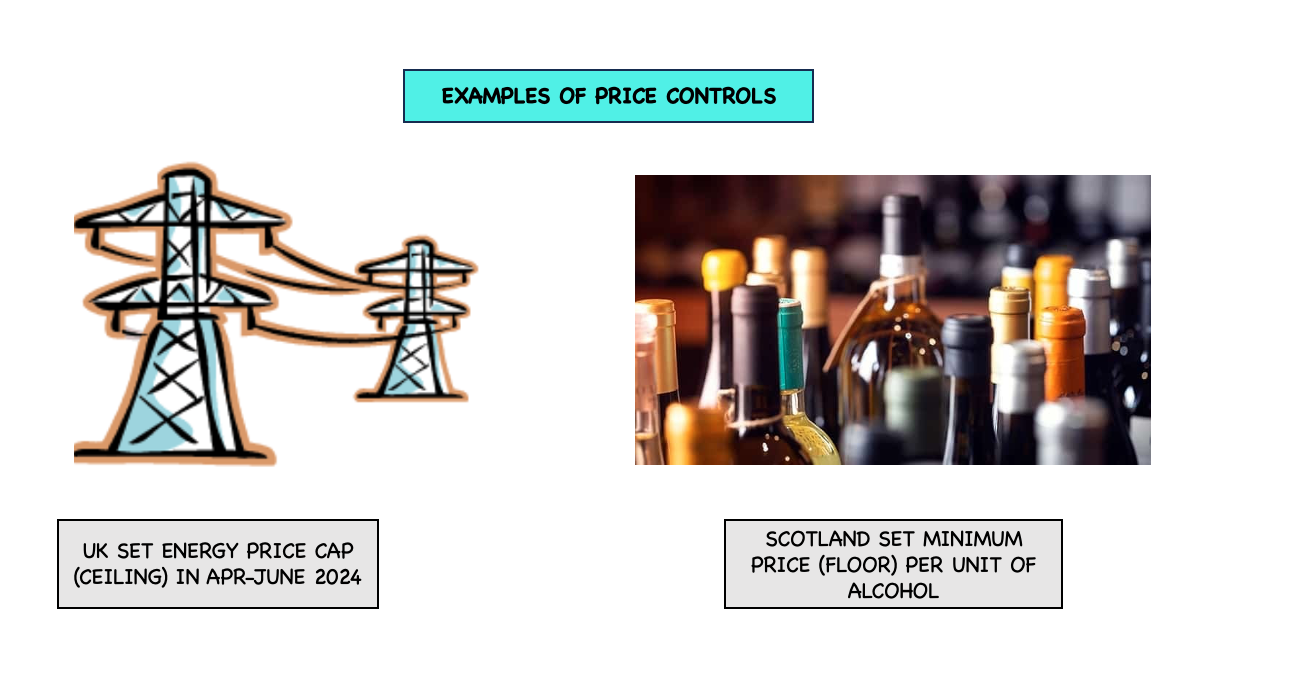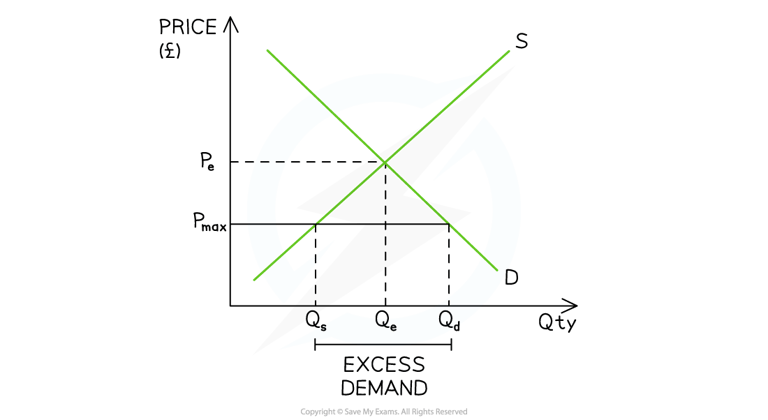Students' often draw maximum and minimum price diagrams the wrong way around. Make sure you can draw both diagrams and show that they can lead to excess supply or excess demand.
You should be able to explain the merits of using price controls and give examples of specific markets where price controls are used by the government.
Always point out that It is difficult for governments to set prices at the ‘correct’ level. Generally, price controls distort the price signals in markets and can worsen the problem rather than solve it, leading to government failure. A more effective solution to maximum prices for rent controls could be increasing the supply of housing.




